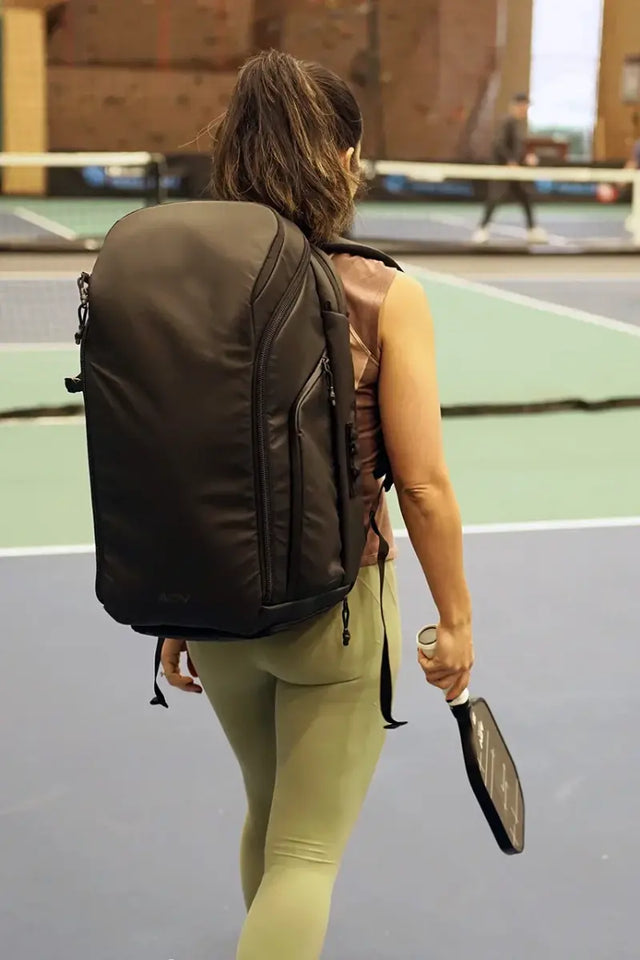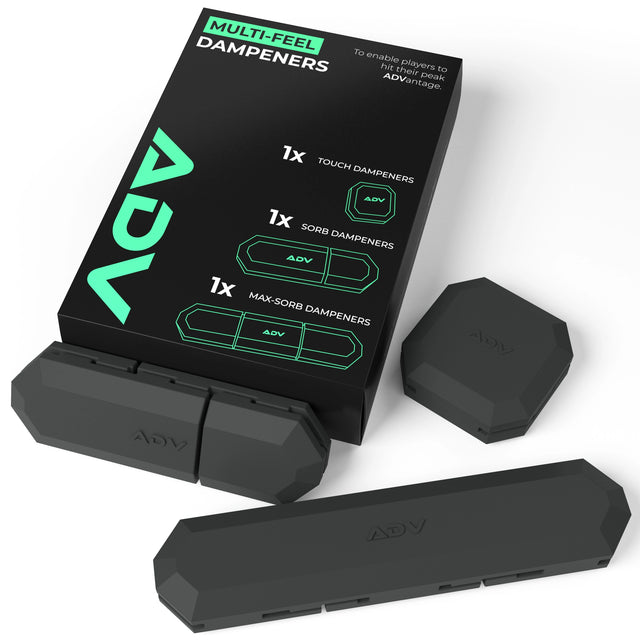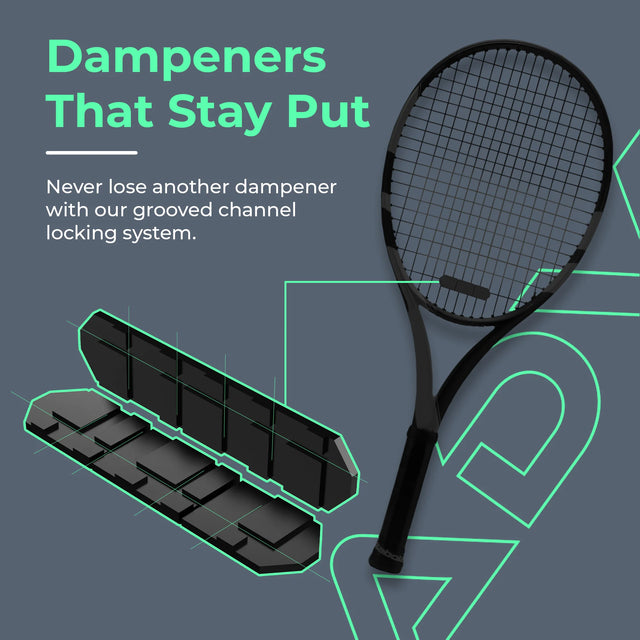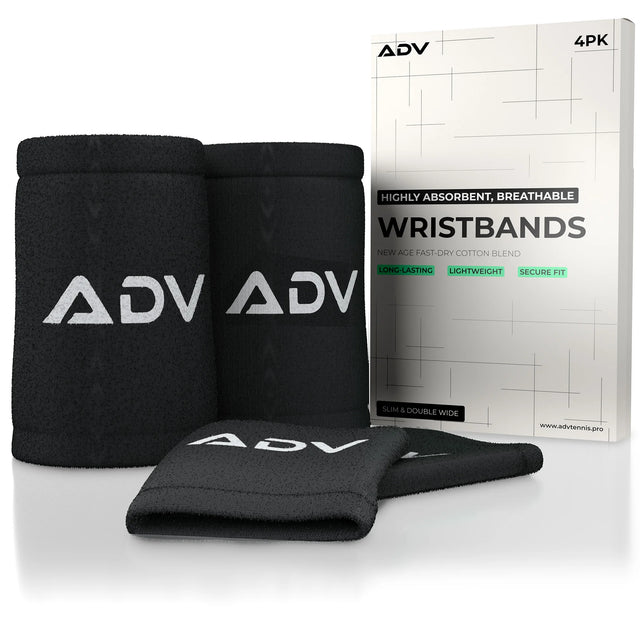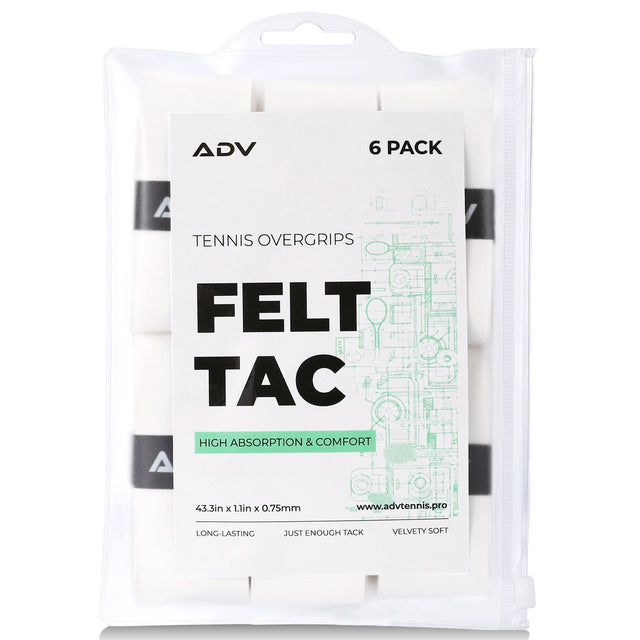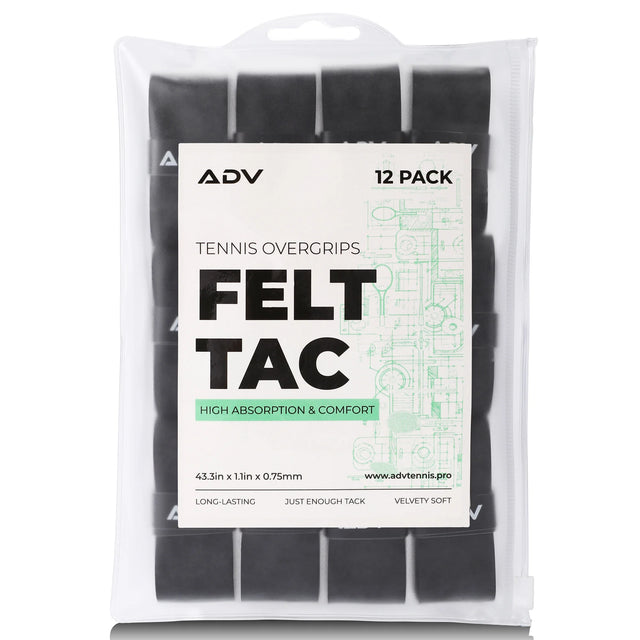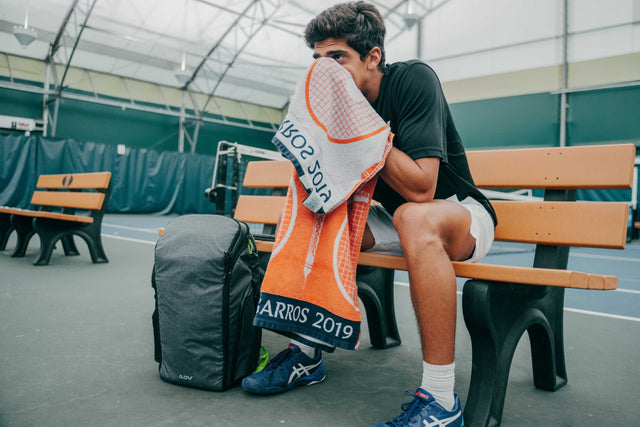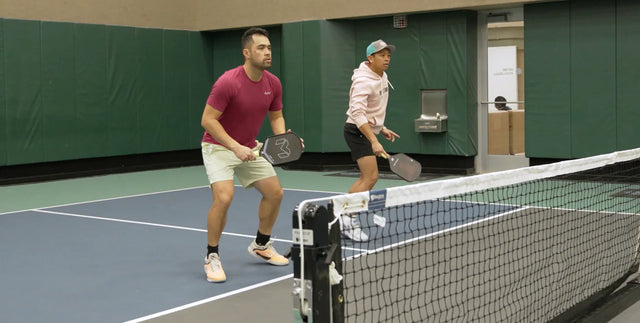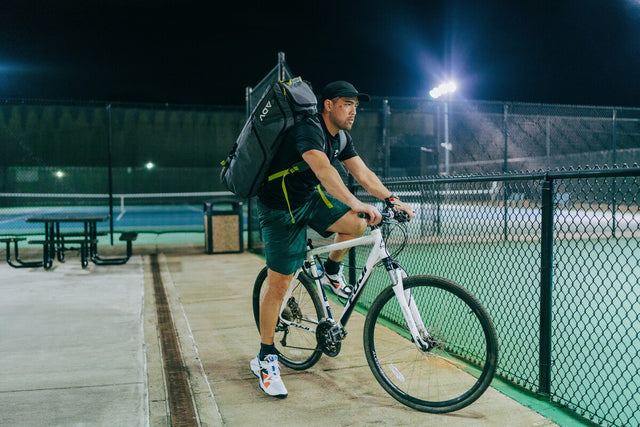How To Choose The Perfect Pickleball Backpack
Picking the right bag for pickleball might seem straightforward, but not all bags are created equal. A well-designed backpack for pickleball gear can make your life on and off the court much easier, keeping your equipment safe, organized, and easy to carry. With the explosive growth of pickleball, manufacturers have responded with a variety of bags and packs loaded with features specifically for the sport. In this comprehensive guide, we'll break down what makes the best pickleball backpacks stand out and how you can identify the perfect one for your needs. From capacity and comfort to specialized compartments, we’ll cover all the pickleball backpack features you should consider.
Types of Pickleball Bags
Pickleball bags come in various styles, and selecting the right type is your first step. Here’s a quick rundown of each type:
- Pickleball Backpacks: These look similar to standard sports backpacks but are tailored for pickleball. They typically have two shoulder straps for even weight distribution and multiple compartments. A backpack usually offers the most storage and organization. If you carry several paddles, lots of balls, clothing, and personal items, a backpack is ideal. It can serve as your all-in-one pickleball court bag, comfortably holding everything you need for a day on the courts.
- Sling Bags: A sling bag is a one-strap pack that you wear across your back or chest. Sling bags are generally smaller and lighter than full backpacks, making them a good choice if you carry a lighter load. Many players who just bring a paddle or two and a few balls opt for a sling. The strap can be swung around for easy access to gear. While pickleball sling bags are very convenient and often stylish, keep in mind that they put all the weight on one shoulder. If you have minimal gear or prefer a compact bag, a sling could be the perfect fit.
- Duffel and Tote Bags: Some pickleball enthusiasts use duffel bags or large tote bags. These can offer plenty of space, but may lack the specialized compartments of backpacks. A duffel might be a good pickleball bag for tournaments if it’s large enough, since tournament days might require extra clothing, food, and multiple paddles. However, carrying a heavy duffel can strain one shoulder, so some tournament players still prefer a backpack or even rolling bags for heavy loads.
- Dedicated Paddle Bags: In the pickleball (and tennis) world, “paddle bag” sometimes refers to a longer, rectangular bag that can carry paddles and gear. These often have handles and shoulder straps, and are designed to fit paddles without bending or crowding. If you’ve seen tennis players with those big sloping bags, some pickleball brands offer a smaller version for paddles. They can usually hold multiple paddles and a moderate amount of other gear. A paddle bag is excellent for protecting paddles and often has thermal lining for temperature protection, but it may not be as comfortable to wear as a backpack.
In deciding which type is best, consider how much gear you carry and what you find comfortable. Whichever style you choose, ensure it’s built for pickleball so you get the benefit of those sport-specific design elements.

Paddle Compartment and Protection for Your Paddles
One of the most critical features of any pickleball backpack is the paddle compartment. Good bags will have a dedicated space to hold your paddles, often padded or lined to keep them safe. This is a key advantage over ordinary backpacks or gym bags, where your paddles would just jostle around with everything else. All the best pickleball bags have a dedicated compartment or sleeve to safely stow your paddles. This sleeve separates the paddles from the rest of your gear, preventing scratches or dings to those expensive paddle faces. Bonus points if the compartment is padded for extra protection and can be accessed from the outside of the bag. That way, you can grab or stow a paddle without unzipping your entire bag and digging through layers of clothes and equipment.
When evaluating the paddle compartment, consider how many paddles you typically carry. Many pickleball backpacks can hold at least two paddles. If you usually bring a backup paddle or play doubles and carry a partner’s paddle, look for a bag that advertises multiple paddle capacity. The fit is also important: paddles should slide in easily, and the compartment should be deep enough to cover the paddle heads. Some compartments leave the paddle handles sticking out at the top. Another nice feature to look for is a thermal-lined paddle compartment. High-end pickleball bags sometimes include a thermally insulated paddle pocket, similar to tennis bags. The reason? Extreme heat can damage paddles over time.
Storage Capacity and Organization
A good pickleball backpack should have space for all of this and smart ways to organize it. Simply having one giant compartment isn’t enough. You don’t want to be rummaging around a black hole of items to find your lucky ball or your wallet. Look for bags with multiple pockets and sections to keep things tidy. Ball storage is a feature to pay attention to. You’ll typically carry a few pickleballs. Some pickleball bags include a dedicated ball pouch or a mesh sack that attaches either inside or outside a pocket. Others might just expect you to toss balls in one of the compartments. Having a separate place for balls is handy so they don't roll around or get lost at the bottom of the bag.
Consider how the bag handles wet or dirty items, too. After an intense match, you might have a sweaty shirt or socks – a good bag will have a place to put these so they don’t funk up everything else. Some pickleball backpacks have a vented laundry pocket or at least a plastic-lined pouch for wet clothes. Similarly, if you carry court shoes, a separate shoe compartment is a fantastic feature. Many bags include a bottom zippered section just for shoes, sometimes even ventilated with grommet holes or mesh panels. This keeps your dirty, dusty court shoes away from your clean gear and allows some air flow to mitigate odors.
Volume matters as well. If you’re a casual player, a compact bag is sufficient, but if you travel or participate in tournaments, you’ll likely want a larger volume bag. A pickleball bag for tournaments typically has a larger main compartment to hold extra attire, snacks for the day, maybe a small cooler insert, and multiple paddles. Tournament days run long, so players often bring more stuff – your bag should be up to the task. Pay attention to the bag’s dimensions or liter capacity if provided. Many standard pickleball backpacks have a volume of 20-30 liters. Larger “tournament” bags or duffels might be 40 liters or more.
Organization features to look for include internal zippered pockets, external accessory pockets, and dividers. Some backpacks even have built-in organizers or come with removable pouches for smaller items. If you’re someone who likes everything in its place, seek out bags marketed as having lots of organization. On the other hand, avoid a bag so large that it tempts you to overpack. Carrying unnecessary weight can strain your back. Strike a balance between enough space and sensible size.
Comfort and Weight Distribution
Look at the straps. For any backpack-style bag, you want wide, padded shoulder straps. Thin straps will dig into your shoulders once the bag is heavy. Ideally, the bag also features an adjustable chest strap or sternum strap that can be clipped across the front to help distribute weight and prevent the shoulder straps from slipping off. Some larger backpacks even include a waist belt like a hiking pack – not common in pickleball bags, but a nice bonus if present. A well-designed lightweight pickleball backpack should not only be light in its own material weight, but also help you carry the load comfortably.
Next, consider the back panel. Is it padded and ergonomic? Many good pickleball backpacks have padding on the portion that rests against your back. Some use breathable mesh or airflow channels to reduce sweat build-up on your back during those hot summer matches. Comfort also means the bag fits your body well. If you’re on the shorter side or have a smaller frame, check the bag dimensions – an overly long bag might bump against your lower back as you walk. Some brands offer women-specific pickleball backpacks that may have slightly shorter torso lengths or differently contoured straps, which is why they are designed for women. A quality women’s pickleball backpack should offer a balance of style, size, and smart weight distribution so that it’s comfortable to carry without sacrificing capacity.
Durability and Material Quality
Durability comes down to the materials and construction quality. Look for bags made from tough, water-resistant fabrics. Common materials include high-denier polyester, nylon, or even heavy canvas or synthetic leather. High-denier fabrics have a tighter weave and are more resistant to abrasion. Materials like PU leather, tarpaulin, or high-denier polyester are suitable to withstand daily wear. These materials resist ripping and fraying, and tarpaulin (a tarp-like material) can be extremely durable and weatherproof.
Check the quality of the zippers and stitching as well. Zippers should be sturdy (YKK zippers are a gold standard in many bags, known for durability). Ideally, compartments that hold a lot of gear have double zippers so you can open from either end and have a backup if one zipper fails. Stitching should be even and reinforced at stress points. If the bag has to carry weight, look for bar-tack stitching or rivets at strap attachments and handle connections. The bottom of the backpack is another potential weak point; some bags have a double-layer bottom or use a tougher fabric on the base to prevent wear from setting the bag down. Weather resistance is a part of durability, too. Even if you don’t plan to play in the rain, your bag might occasionally be caught in a drizzle or placed on damp grass. Water-resistant or waterproof material will keep your gear dry and also make the bag easier to clean. Many pickleball bags have a PVC or TPU coating on the inside for waterproofing. Others might come with a rain cover. If you often play outdoors, consider these features. At the very least, a durable pickleball backpack should not have its color or fabric ruined by a bit of moisture or sun exposure. UV-resistant fabric is a plus for bags that will bake in the sun by the courts.

Special Features: Insulated Pockets, Ventilation, and More
The little extra features can be the cherry on top that makes a good pickleball backpack truly perfect for you. Modern pickleball bags often incorporate thoughtful additions to solve common player problems. Here are some special features to keep an eye out for:
- Insulated Cooler Pocket: Many pickleball backpacks now include an insulated pocket or pouch designed to keep drinks cold. This can be a game-changer if you play in the heat or spend hours at the courts. Instead of carrying a separate cooler, you can slip a water bottle or sports drink into the insulated compartment and have a refreshing cold drink ready. Some insulated pockets are big enough for a couple of bottles or an ice pack and a sandwich. They’re usually lined with a thermal, foil-like material.
- Fence Hook or Clip: This is a seemingly minor feature that you won’t want to go without once you have it. A fence hook is basically a hook that lets you hang your bag on the court fence. Almost all dedicated pickleball bags include this now. Why is it so great? Because outdoor courts often have nowhere clean to put your bag except the ground. Hanging it on the fence keeps it off the dirty, possibly wet court surface and at a convenient height to grab things between games. Plus, it prevents the dreaded scenario of someone tripping over bags lying around the court. When checking a bag, see if it has a sturdy hook that can support the bag’s weight. Some hooks are metal carabiner-style, others are plastic but heavy-duty. It should tuck away when not in use, so it doesn’t snag on anything.
- External Water Bottle Holders: Hydration is key in pickleball, so you’ll want your water bottle to be easy to reach. Many pickleball backpacks include one or two side pockets sized explicitly for water bottles. Ideally, the pocket is elasticized or made of stretch mesh to accommodate different bottle sizes and to hold them snugly. An external holder is best so condensation or spills don’t get your other gear wet. Check that your favorite bottle fits – some pockets are too shallow for tall bottles, or too tight for wide ones.
- Laptop/Multifunction Compartment: A number of players use their pickleball bag as their everyday bag as well. If you go to the court straight from work or vice versa, having a laptop sleeve or a document pocket is useful. Even if you don’t carry a laptop, that padded sleeve can double as extra paddle storage or a place for a tablet or notebook. This feature isn’t necessary for everyone, but it adds versatility if you want your bag to serve more than one purpose in your life.
- Structure and Stability: One neat feature on some newer bags is a structured base or frame that allows the bag to stand upright on its own when you set it down. This means the bag won’t constantly tip over and spill contents out. It essentially becomes like a portable locker. Rigid sides or a flat bottom panel contribute to this. If you find it annoying when bags flop, look for mentions of “stands upright” in product descriptions. Also, some bags open in clamshell fashion, which can make packing and accessing gear easier, especially if it’s a larger bag.
Incorporating which special features matter most to you will help narrow down your choices. Features that seem small can actually make a big difference in your day-to-day use of the bag. It’s all about convenience and making your time on the court hassle-free.
How to Organize Your Pickleball Bag
Even the best bag won’t help if it’s a jumbled mess inside. A good organization ensures that you can quickly find what you need during a game and also helps distribute weight properly. Here are some tips on how to organize pickleball bags so you can optimize every inch of space:
- Place Heavy Items Centrally: Always pack the heaviest items at the center of the bag or against your back. For example, put your shoes or a full water bottle in the middle of the main compartment, rather than on one side. This keeps the bag’s weight balanced. Packing heavy gear on one side can cause the bag to pull awkwardly and strain your shoulder. Experts advise that keeping heavier items close to the center prevents the weight from dragging the bag to one side.
- Use Every Compartment with Purpose: Assign a purpose to each pocket or section. Maybe one of the small zippered pockets becomes your dedicated “first aid/medicine” pocket, another for your keys, phone, and wallet. The top pocket could be for quick-grab items like sunglasses, chapstick, or a granola bar. If your bag has a specific ball pocket, use it for balls so they’re separate from everything else. By giving each space a role, you’ll know exactly where to reach for something.
- Separate Clean and Dirty Items: Utilize the shoe compartment or laundry pocket. Always stash your court shoes in their separate compartment immediately after play, so the clay or dust doesn’t get on your clothes. Likewise, have a plastic bag or the designated wet clothes pocket ready for sweaty apparel or used towels. This practice will keep the rest of your gear cleaner and odor-free longer.
- Don’t Overpack with “Just in Case” Items: It’s tempting to fill a big bag with all sorts of backup items. But if you find you consistently don’t use certain items, consider leaving them out. Overpacking not only makes the bag heavier, but it also creates clutter. One rule of thumb: if you haven’t used an item in your bag for several weeks of play, you probably don’t need to carry it every time. Streamline your kit to the essentials; your shoulders will thank you.
- Keep it Consistent: Try to pack your bag the same way every time. Developing a routine – for instance, always putting your paddles in first, then your towel on top of them, shoes in the bottom compartment, balls in the front pocket, etc. – means you’ll quickly notice if something’s missing and build muscle memory for where each item lives. Consistency helps you find items without even thinking, and it ensures balanced packing each time. If you always place, say, your water bottle and shoes in the center, you’ll maintain good weight distribution trip after trip.
- Maintain Your Bag: Part of the organization is upkeep. Take a few minutes every now and then to clean out your backpack. Remove old tournament flyers, empty ball cans, used grip tape, and trash that might accumulate. Wipe out the inside if there’s dirt or spills. This not only prolongs the life of your bag but also makes packing for the next game a lot easier because you’re starting fresh.
- Utilize Pouches or Ziplocks: If your bag doesn’t have enough built-in compartments for your taste, you can further organize by using small pouches or resealable bags. For instance, keep all your overgrips, lead tape, and paddle maintenance bits in a small zipper pouch within the bag. Or use a mesh bag for all your pickleballs so you can pull them out in one go. This way, even inside a larger compartment, items stay grouped.
When everything has its place, you’re less likely to forget something important. There’s a real satisfaction in knowing you can grab your pickleball paddle bag and head out the door confident that it’s fully loaded for action, with everything accessible exactly when you need it.
Buying a Pickleball Backpack: Where and What to Consider
With the surge in pickleball’s popularity, the market is flush with options. You can find pickleball backpacks in sporting goods stores, pro shops at clubs, and of course online. Many players choose to buy pickleball backpacks online because of the sheer variety available and the convenience of home delivery. When you shop online, you can compare features, read customer reviews, and often get better deals or sales. Be sure to buy from reputable retailers or directly from the websites of known brands to ensure you receive an authentic, high-quality product. Before you hit that “buy” button, double-check dimensions and features on the product listing. Pictures can sometimes be deceiving in size. Look for measurements in the description to measure if your gear will fit. If ordering online, also take note of the return policy in case the bag doesn’t meet your expectations or fit well once you try it in person.
When you’re ready to order pickleball bags online, consider searching the websites of brands that specialize in paddle sports. They frequently have the latest models tailored for pickleball. Many tennis equipment companies have also entered the pickleball market, offering bags that are suitable for both tennis and pickleball. However, there are also pickleball-specific brands designing innovative bags. For example, ADV Tennis (ADV) is one brand that offers modern pickleball backpacks featuring paddle sleeves, thermal-lined compartments, and durable construction. Checking out brands like this can give you confidence that the bag is truly built with pickleball players in mind, since they often incorporate feedback from the pickleball community into their designs.
Frequently Asked Questions
How many paddles can a pickleball backpack hold?
Most pickleball backpacks hold two to six paddles, depending on the bag’s size and design. Always check the product description for specific capacity before purchasing.
Are pickleball backpacks suitable for beginners?
Yes, pickleball backpacks are great for beginners. They offer easy organization and enough space for basic gear, making it simple to carry paddles, balls, and personal items to the court.
Can I use a regular backpack for pickleball?
You can, but pickleball backpacks have sport-specific compartments and padding to better protect your paddles and gear, making them a more practical and durable choice.
How do I clean my pickleball backpack?
Most pickleball backpacks can be spot-cleaned with mild soap and water. Avoid machine washing unless specified by the manufacturer to prevent damage to materials and zippers.
Are pickleball backpacks water-resistant?
Many pickleball backpacks are made from water-resistant materials to protect your gear from light rain and moisture. Always check the product details for water resistance or waterproof features.
Is there a separate compartment for shoes or wet clothes?
Many pickleball backpacks include a vented or lined compartment for shoes or wet clothing, keeping them separate from clean gear and helping to control odors.
Can a pickleball backpack fit extra clothes and snacks?
Yes, most pickleball backpacks have enough space for extra clothes, snacks, and personal items, along with your paddles and balls, especially those designed for tournaments or travel.
Will a pickleball backpack fit my water bottle?
Most pickleball backpacks feature external or side pockets designed to hold water bottles of various sizes, making it easy to stay hydrated during play.
Purchase and Return Policies
In-store purchases allow you to inspect the backpack firsthand, check its size, material, and compartments, and get immediate answers from knowledgeable staff. You can also take the bag home right away, which is ideal if you need it for an upcoming game or tournament. However, the in-store selection may be more limited compared to what’s available online. Online shopping, on the other hand, provides access to a broader range of brands, styles, and price points, often including exclusive online-only models or sales. The typical online purchase process is straightforward: after selecting your desired pickleball backpack, you add it to your cart, enter shipping and payment information, and receive an order confirmation by email. Most retailers process orders within one to three business days. Standard shipping times in the U.S. typically range from 3 to 7 business days, although expedited options are often available for an additional fee. Some brands and retailers offer free shipping on orders over a certain amount, so it’s worth checking for current promotions or minimum purchase thresholds.

Standard return policies for pickleball backpacks generally allow returns within 30 days of delivery, provided the bag is unused and in its original condition with all tags attached. Refunds are typically issued to the original payment method once the returned item is received and inspected. Be aware of exceptions: items showing signs of use, missing tags, or purchased as final sale may not be eligible for return. Additionally, some stores charge a restocking fee or only offer store credit for returns, so it’s wise to read the fine print or contact customer service if you have questions. To initiate a return, the process typically involves completing an online return form or contacting customer support to obtain a return authorization. You’ll then package the backpack securely, include any required documentation, and ship it back using the provided label or your preferred carrier. Keeping your order confirmation and tracking information handy will help ensure a smooth return experience.
Buying the right pickleball backpack comes down to knowing your requirements, doing a bit of research on available models, and choosing a trustworthy source to purchase from. Once you have the bag, load it up with your gear and hit the courts! You’ll likely notice the difference immediately with easier organization, smoother transport, and compliments from fellow players on your lovely new bag. Enjoy the convenience and peace of mind that comes with having the perfect pickleball backpack, and most importantly, enjoy your time on the court even more, now that all your gear is in good hands.
Sources
-
Caitlin Moran, “The 7 Best Pickleball Bags of 2025,” The Strategist, New York Magazine, March 12, 2025.
-
Adam Fisher, “Best Pickleball Bags for 2025,” Sports Illustrated, April 8, 2025.
-
Rachel Scott, “Pickleball Gear Guide: How to Choose a Bag,” Verywell Health, February 20, 2025.
-
U.S. Pickleball Association, “Equipment Guide: Pickleball Bags,” USAPA Official, accessed June 30, 2025.

